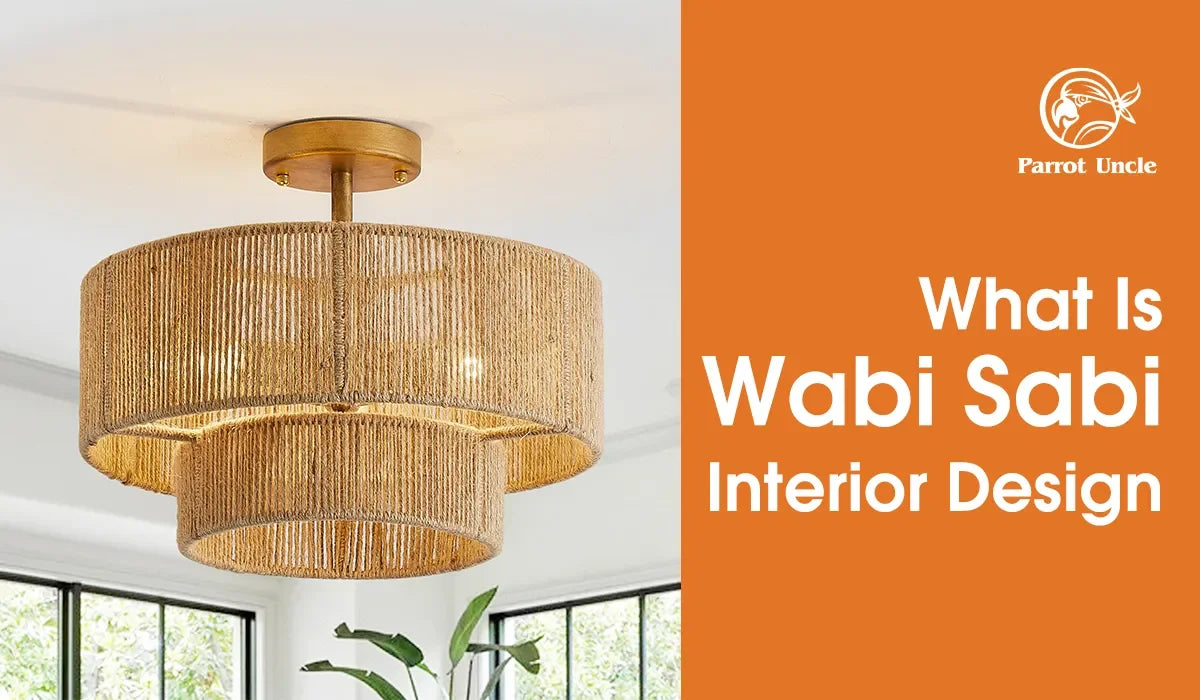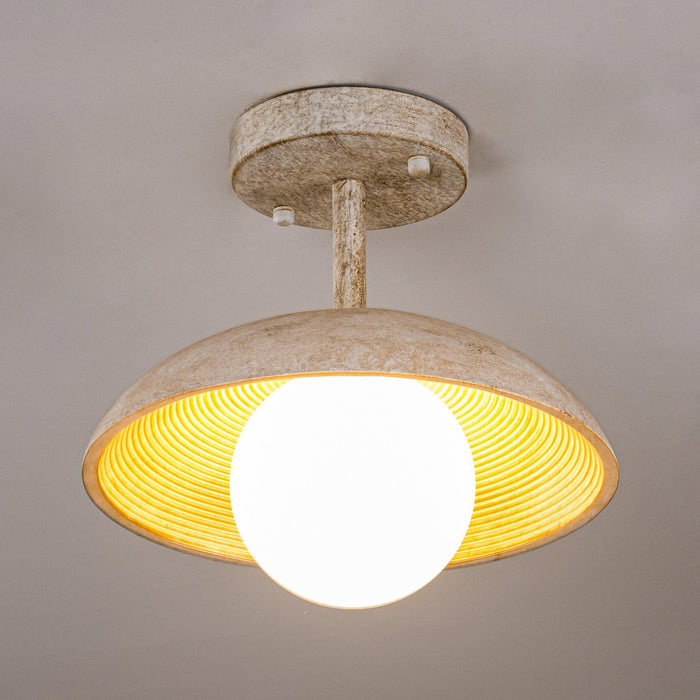Wabi Sabi interior design, a concept deeply rooted in Japanese philosophy, is increasingly resonating with homeowners seeking authenticity and tranquility in their living spaces. But what exactly is it? And how can you master this design approach in 2025 to create a home that truly nourishes your soul? This article delves into the heart of Wabi Sabi, offering practical tips, strategies, and insights to help you understand and implement this powerful design philosophy.

What is Wabi Sabi Interior Design? Embracing Imperfection
Wabi Sabi isn't just a design style; it's a worldview. It finds beauty in imperfection, impermanence, and simplicity. Instead of striving for flawless perfection, Wabi Sabi celebrates the unique character of natural materials, the marks of time, and the stories told by objects. Think of a perfectly imperfect ceramic vase, a weathered wooden table, or linens with natural wrinkles. These are the essence of Wabi Sabi.
The core tenets are:
- Kanso : Simplicity and elimination of clutter.
- Fukinsei : Asymmetry or irregularity.
- Shibumi: Beauty in the understated and elegant.
- Shizen : Naturalness and authenticity.
- Yugen : Subtle profundity and mystery.
- Datsuzoku : Freedom from convention.
- Seijaku : Tranquility and stillness.
Why does this matter? In a world obsessed with perfection and constant upgrades, Wabi Sabi offers a refreshing alternative. It encourages us to slow down, appreciate the present moment, and find contentment in what we already have. For homeowners, this translates to a home that is not only beautiful but also a sanctuary of peace and authenticity.
How does it benefit you? Wabi Sabi design can reduce stress, foster creativity, and promote a sense of connection to nature and your own personal history.
7 Timeless Secrets to Mastering Wabi Sabi Design in 2025
These secrets aren't just aesthetic suggestions; they're guiding principles for creating a space that embodies the Wabi Sabi spirit.
1. Embrace Natural Materials
Wood, stone, clay, linen, and cotton are the building blocks of a Wabi Sabi interior. Choose materials that are unfinished or minimally processed, showcasing their natural texture and imperfections.
- Paint Point: Shiny, synthetic materials can feel cold and sterile.
- Motivation: Connection with nature is essential for well-being.
Example: Instead of a perfectly polished marble countertop, opt for a concrete countertop with subtle variations in color and texture.
2. Prioritize Functionality Over Form
While aesthetics are important, Wabi Sabi emphasizes functionality. Choose furniture and objects that are practical and serve a purpose. Avoid unnecessary ornamentation or decorative items that don't add value to your daily life.
- Paint Point: Overcrowded spaces can lead to stress and anxiety.
- Motivation: A clutter-free environment promotes a sense of calm.
Example: A simple wooden bench provides seating and storage, while a single, handcrafted ceramic bowl holds fruit on the table.
3. Celebrate Imperfection
Embrace the cracks, the chips, the dents, and the faded colors. These imperfections tell a story and add character to your home. Don't try to hide them; celebrate them!
- Paint Point: The pursuit of perfection is exhausting and unattainable.
- Motivation: Imperfection is what makes things unique and beautiful.
Example: A vintage rug with a worn patch or a set of mismatched chairs around the dining table.
4. Create a Neutral Color Palette
Wabi Sabi interiors typically feature a neutral color palette inspired by nature. Think of earthy tones like beige, gray, brown, and white, with subtle accents of greens and blues. Avoid bright, bold colors that can be jarring and distracting.
- Paint Point: Overstimulation can lead to sensory overload.
- Motivation: A calming color palette promotes relaxation and tranquility.
Example: Walls painted in a soft, off-white hue, with accents of natural wood and linen.
5. Let in Natural Light
Maximize natural light by using sheer curtains or blinds that allow light to filter through. Avoid heavy drapes that block out the sun.
- Paint Point: Artificial light can be harsh and unnatural.
- Motivation: Natural light enhances mood and promotes well-being.
Example: Large windows with minimal window coverings, allowing natural light to fill the space.
6. Incorporate Handmade Items
Handmade objects add a personal touch to your home and connect you to the artisans who created them. Look for pieces that are unique and imperfect, reflecting the Wabi Sabi spirit.
- Paint Point: Mass-produced items lack character and soul.
- Motivation: Handmade items tell a story and add a sense of authenticity to your home.
Example: Hand-thrown pottery, woven baskets, or handmade textiles.
7. Cultivate Minimalism
Wabi Sabi encourages minimalism, but not in a stark or sterile way. Instead, it focuses on surrounding yourself with only the things you truly love and need. Declutter your space regularly, and let go of anything that no longer serves a purpose.
- Paint Point: Clutter can be overwhelming and distracting.
- Motivation: A minimalist lifestyle promotes clarity, focus, and peace of mind.
Example: A curated collection of books, a few carefully chosen pieces of art, and functional furniture that serves a purpose.
Step-by-Step Approach to Wabi Sabi Interior Design
Ready to transform your space? Follow this step-by-step approach:
Step 1: Declutter and Simplify: Start by decluttering your home. Get rid of anything you don't need or love.
Step 2: Choose a Neutral Color Palette: Select a calming color palette of earthy tones.
Step 3: Incorporate Natural Materials: Bring in natural materials like wood, stone, and linen.
Step 4: Add Handmade Items: Look for unique, handcrafted objects.
Step 5: Embrace Imperfection: Don't try to hide the flaws; celebrate them.
Step 6: Let in Natural Light: Maximize natural light with sheer curtains.
Step 7: Arrange Furniture Functionally: Focus on creating a space that is both beautiful and practical.
Effective Strategies for Implementing Wabi Sabi
- Start Small: Don't try to overhaul your entire home at once. Focus on one room or area first.
- Shop Vintage and Secondhand: Look for unique pieces with character and history.
- DIY Projects: Create your own handmade items to add a personal touch.
- Repurpose and Upcycle: Give new life to old objects.
- Embrace Negative Space: Don't be afraid to leave empty space in your home. This allows the objects you do have to breathe.
Tips and Tricks for Wabi Sabi Success
- Use natural cleaning products: Avoid harsh chemicals that can damage natural materials.
- Incorporate plants: Plants bring life and energy into your home.
- Use natural scents: Essential oils or dried herbs can create a calming atmosphere.
- Embrace the seasons: Decorate with seasonal items like branches, leaves, or flowers.
Common Mistakes to Avoid in Wabi Sabi Design
- Trying too hard to be perfect: Wabi Sabi is about embracing imperfection, not creating a perfectly imperfect space.
- Overdoing the rustic look: Wabi Sabi is about simplicity and elegance, not a cluttered, farmhouse aesthetic.
- Ignoring functionality: Wabi Sabi is about creating a space that is both beautiful and practical.
- Using too many synthetic materials: Stick to natural materials to create an authentic Wabi Sabi feel.
Wabi Sabi vs. Other Design Styles
It's easy to confuse Wabi Sabi with other minimalist or natural design styles. Here's a comparison:
| Feature | Wabi Sabi | Minimalism | Scandinavian |
|---|---|---|---|
| Focus | Imperfection, age, simplicity | Functionality, clean lines | Hygge, comfort, natural light |
| Materials | Natural, unfinished, organic | Simple, modern | Light wood, textiles, natural fibers |
| Color Palette | Earthy, muted, natural | Neutral, often monochrome | Light, bright, with pops of color |
| Key Elements | Handmade items, weathered looks | Minimalist furniture, storage | Cozy textiles, candles, greenery |
Case Details to Compare
Let's examine two hypothetical case studies:
Case Study 1: The Perfectionist's Dilemma
- Client: Sarah, a successful lawyer, sought a home that reflected her professional image: polished, modern, and flawless. She initially gravitated towards a minimalist design with sharp lines and perfect surfaces. However, she found the space cold and uninviting.
- Transformation: Through Wabi Sabi principles, Sarah incorporated natural wood furniture with visible grain, imperfect ceramic vases, and linen textiles with natural wrinkles. She embraced the existing imperfections in her vintage hardwood floors instead of replacing them.
- Outcome: Sarah reported feeling more relaxed and connected to her home. The space felt warmer and more personal, reflecting her inner self rather than an external ideal.
Case Study 2: The Clutterbug's Cure
- Client: David, a creative writer, lived in a home overflowing with books, artwork, and souvenirs. While he loved his possessions, he felt overwhelmed by the clutter.
- Transformation: David adopted the Kanso principle, decluttering ruthlessly. He kept only the items that truly brought him joy and served a purpose. He replaced his cluttered shelves with a few carefully chosen pieces of handcrafted storage.
- Outcome: David found that decluttering improved his focus and creativity. His home felt more spacious and calming, allowing him to concentrate on his writing.
Market Insights: The Growing Appeal of Wabi Sabi
According to recent surveys, there's a growing desire for homes that feel authentic, comfortable, and connected to nature. A report by the National Association of Realtors indicates that "sustainability and wellness are becoming increasingly important factors in home design." This trend aligns perfectly with the principles of Wabi Sabi, which emphasizes natural materials, simplicity, and a connection to the environment. The global interior design market is projected to reach $150 billion by 2025, and Wabi Sabi is poised to capture a significant share of this market due to its emphasis on sustainability and wellness.
Current Status and Future Trends in Wabi Sabi Design
Currently, Wabi Sabi is gaining popularity as a counterpoint to the fast-paced, consumer-driven culture. Looking ahead, we can expect to see:
- Increased use of sustainable materials: Eco-friendly materials like reclaimed wood and recycled textiles will become even more prevalent.
- Integration of technology: Smart home technology will be seamlessly integrated into Wabi Sabi interiors, without compromising the natural aesthetic.
- Personalization and customization: Homeowners will increasingly seek personalized Wabi Sabi designs that reflect their individual style and values.
Benefits of Wabi Sabi Interior Design
| Benefit | Description |
|---|---|
| Reduced Stress | The calming color palette and minimalist approach promotes relaxation. |
| Increased Creativity | The focus on natural materials and handmade items inspires creativity. |
| Enhanced Well-being | The connection to nature promotes physical and mental well-being. |
| Sustainability | The use of sustainable materials reduces environmental impact. |
| Authenticity | The embrace of imperfection creates a home that feels genuine and personal. |
Pros and Cons of Wabi Sabi
| Pros | Cons |
|---|---|
| Calming and relaxing atmosphere | Can be mistaken for unfinished or neglected |
| Promotes mindfulness and appreciation | Requires a shift in mindset about perfection |
| Sustainable and eco-friendly | Sourcing unique materials can be time-consuming |
| Focuses on functionality and practicality | Can be perceived as too minimalist for some |
Table 1: Key Elements of Wabi Sabi
| Element | Description | Example |
|---|---|---|
| Natural Materials | Unfinished wood, stone, linen, cotton | Wooden table with visible grain |
| Imperfection | Cracks, chips, dents, faded colors | Vintage rug with a worn patch |
| Simplicity | Minimalist furniture, uncluttered spaces | A single, handcrafted ceramic bowl |
| Natural Light | Maximized daylight with sheer curtains | Large windows with minimal coverings |
Table 2: Wabi Sabi Color Palette
| Color | Description | Example |
|---|---|---|
| Beige | Neutral, warm, earthy | Walls painted in a soft beige hue |
| Gray | Neutral, cool, calming | Concrete countertop with gray tones |
| Brown | Natural, grounding, organic | Wooden furniture in a natural brown finish |
| White | Clean, pure, minimalist | Linen curtains in a crisp white color |
Table 3: Integrating Technology into Wabi Sabi
| Technology | Integration | Example |
|---|---|---|
| Lighting | Smart lighting with warm, natural tones | Dimmable lights that mimic natural sunlight |
| Sound System | Wireless speakers hidden within natural materials | Speakers integrated into a wooden shelf |
| Climate | Smart thermostat with a minimalist design | Thermostat that blends seamlessly into the wall |
Table 4: Wabi Sabi Inspired 'Kizukuri' Sourcing
| Source | Description | Potential Benefits | Potential Challenges |
|---|---|---|---|
| Local Artisans | Partnering with local craftspeople for furniture, ceramics, and textiles | Unique pieces, supports local economy, reduces carbon footprint | Potentially higher cost, longer lead times |
| Reclaimed Materials | Sourcing wood, metal, and other materials from demolition sites or salvage yards | Environmentally friendly, adds character and history | Requires more effort to find suitable materials, may need restoration |
| Thrift Stores/Estate Sales | Finding vintage furniture and accessories with patina and stories to tell | Cost-effective, unique finds | Can be time-consuming, may require cleaning or repairs |
FAQs about Wabi Sabi Interior Design
Q1: Is Wabi Sabi just a trend?
No, Wabi Sabi is a philosophy that has been around for centuries. While it may be experiencing a surge in popularity, its principles are timeless and enduring.
Q2: Is Wabi Sabi expensive?
Not necessarily. You can create a Wabi Sabi interior on a budget by shopping vintage, DIY projects, and decluttering.
Q3: Is Wabi Sabi only for minimalist homes?
No, Wabi Sabi can be incorporated into any style of home. The key is to focus on natural materials, simplicity, and imperfection.
Q4: How do I know if Wabi Sabi is right for me?
If you value authenticity, tranquility, and a connection to nature, Wabi Sabi may be the perfect design style for you.
Q5: Can I mix Wabi Sabi with other design styles?
Yes, you can mix Wabi Sabi with other styles, such as Scandinavian or Bohemian. The key is to maintain a focus on natural materials and simplicity.
Q6: Where can I find inspiration for Wabi Sabi design?
Look to nature, traditional Japanese homes, and online resources like Pinterest and Instagram.
Q7: How do I maintain a Wabi Sabi home?
Regular decluttering, using natural cleaning products, and embracing the natural aging process will help you maintain a Wabi Sabi home.
Q8: Is it difficult to convince a partner to adopt the Wabi Sabi philosophy?
Open communication is key. Explain the benefits of Wabi Sabi – reduced stress, a calming atmosphere, and a connection to nature. Involve them in the design process and find common ground on the key elements. Perhaps start with a small area of the home, like a bedroom or bathroom, to showcase the appeal.






